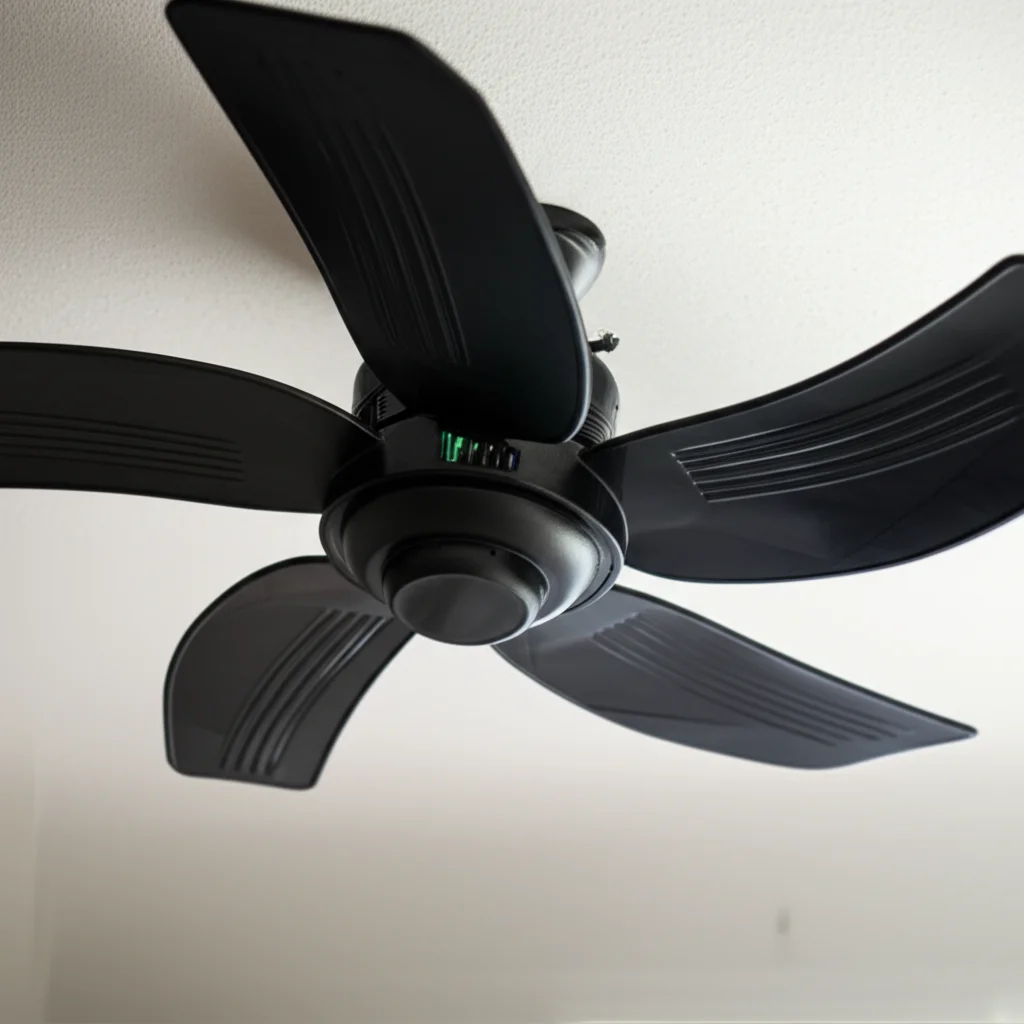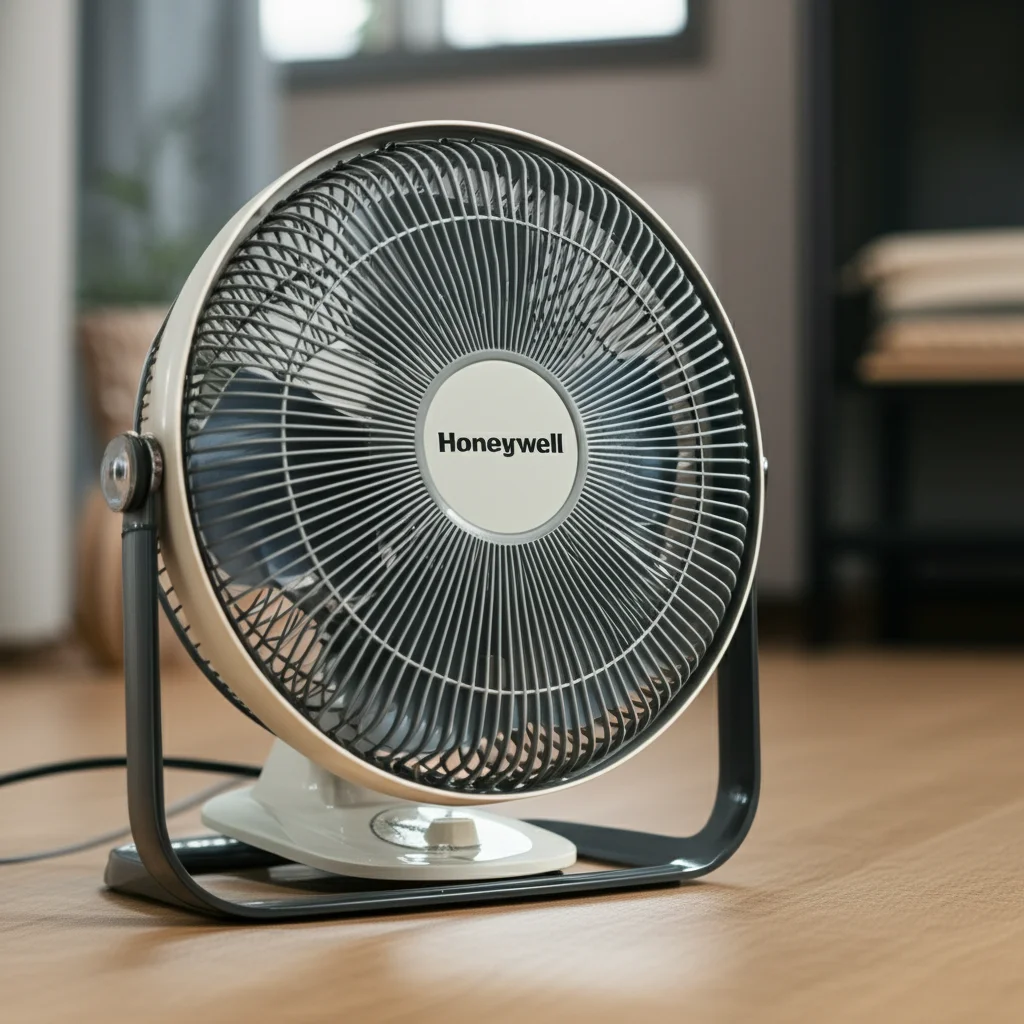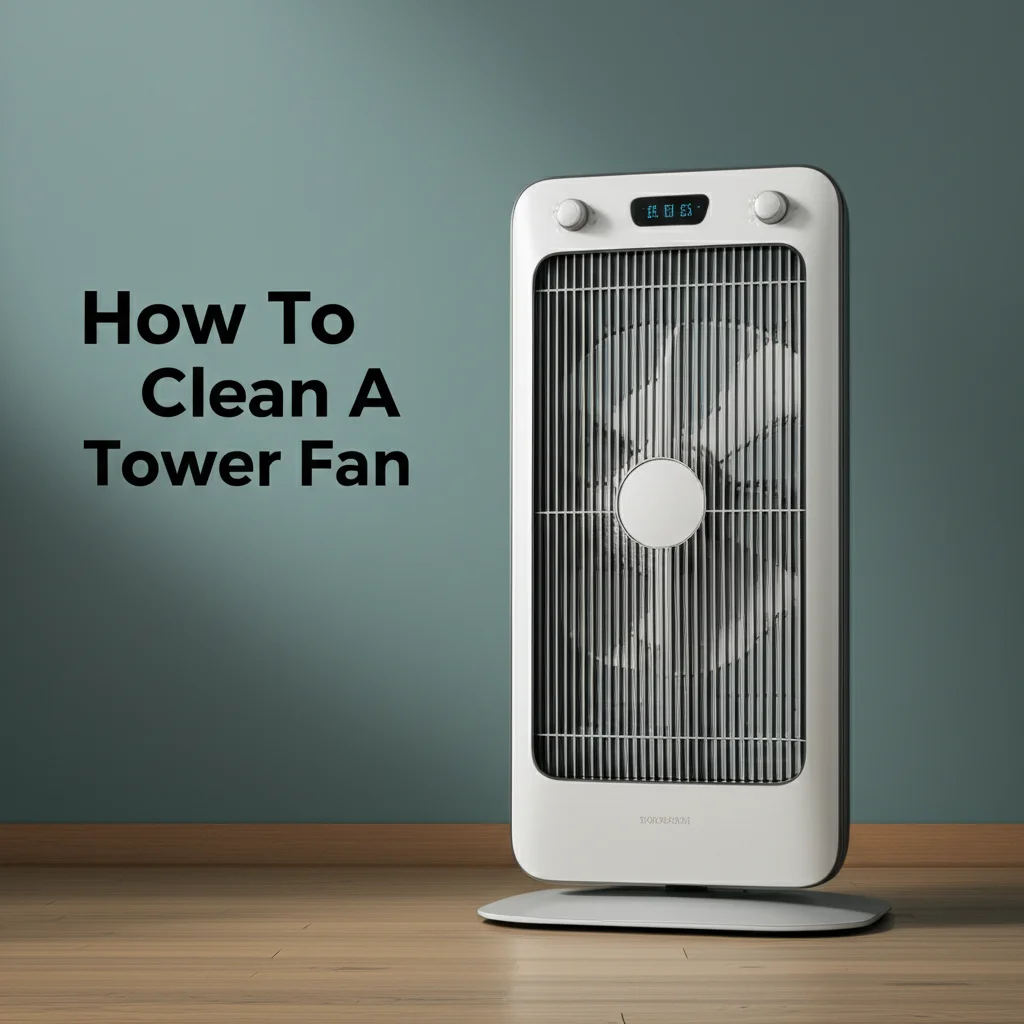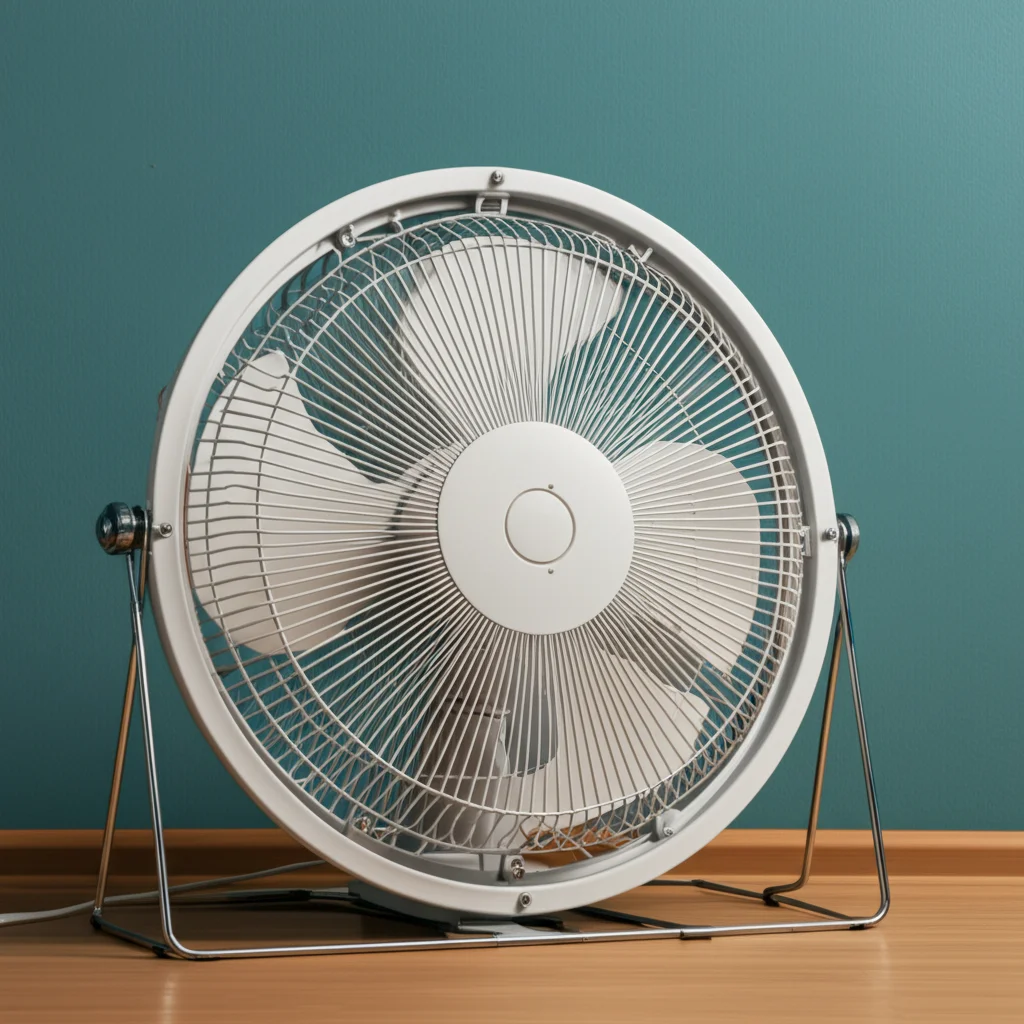· Todd Martin · Home Maintenance · 14 min read
How To Clean Fan Blades

Unlock Peak Performance: How To Clean Fan Blades Effectively
Have you ever noticed a thick layer of dust coating your fan blades? It happens to all of us. Fans are great for air circulation, but they are also masters at collecting dust, dirt, and allergens. A dusty fan not only looks unappealing but also works less efficiently. It can even spread dust around your room instead of just cooling it. Knowing how to clean fan blades correctly makes a big difference.
Cleaning fan blades improves air quality in your home. It also extends the life of your fan. This guide provides simple steps for cleaning all types of fan blades. We will cover everything from ceiling fans to small desk fans. You will learn about the best tools to use and special tricks for tough spots. Let’s get your fans spinning clean and strong again.
Takeaway
Keeping fan blades clean is simple and important.
- Dust fan blades regularly to stop buildup.
- Use the right tools for each fan type.
- Always unplug fans before cleaning.
- Deep clean tough grime with specific solutions.
- Regular maintenance saves time and improves air quality.
To clean fan blades effectively, first unplug the fan for safety. Use a microfiber cloth or vacuum attachment to remove loose dust. For stubborn grime, wipe blades with a damp cloth soaked in a mild cleaner or a vinegar-water solution. Dry the blades completely before using the fan again.
Why Dirty Fan Blades Matter: The Basics of Fan Maintenance
Imagine your fan blades spinning, covered in fuzzy gray dust. It does not just look bad. This dust directly impacts how well your fan works. Dust buildup makes the motor work harder to push air. This means your fan uses more energy. It also provides less airflow.
Dirty fan blades can also spread allergens and dust throughout your living space. If you suffer from allergies, a dusty fan might make your symptoms worse. Regular cleaning helps reduce these airborne particles. It creates a healthier home environment for everyone. Think of fan cleaning as a quick way to improve the air you breathe.
When fan blades become too heavy with dust, they can even cause the fan to become unbalanced. This leads to wobbling or increased noise. Over time, this stress can damage the fan motor. Keeping your fan blades clean truly extends the life of your appliance. It ensures it runs smoothly and quietly.
Dust acts like a blanket, trapping heat around the motor. This can cause the fan to overheat. Overheating shortens the fan’s lifespan. It also creates a potential fire hazard. A clean fan operates at optimal temperature. This keeps your home safe and comfortable.
Essential Tools and Preparations for Cleaning Fan Blades
Before you start cleaning, gather your supplies. Having everything ready makes the process smoother. The right tools help you clean fan blades efficiently and safely. You likely have most of these items already in your home.
Safety is always first. Make sure your fan is completely unplugged before you touch the blades. For ceiling fans, also turn off the power at the circuit breaker. This prevents accidental starts. It protects you from harm.
Here is a list of tools you will need:
- Microfiber cloths: These grab dust well and do not scratch surfaces.
- Vacuum cleaner with brush attachment: Excellent for removing loose dust.
- Spray bottle: For water or cleaning solutions.
- Mild soap or white vinegar: Effective and safe cleaning agents.
- Ladder or step stool: Essential for ceiling fans.
- Old newspaper or drop cloth: To catch falling dust.
- Screwdriver: If you need to remove fan cages or covers.
- Dusting brush or duster: For light, frequent cleaning.
A vacuum cleaner is a powerful tool for initial dust removal. The brush attachment helps to dislodge dust without spreading it. For small fans, a handheld vacuum works well. For larger fans, use your main vacuum. You can also learn how to clean dust off a fan more generally.
Setting up your workspace correctly saves time. Lay down newspaper or a drop cloth under the fan. This catches dust as it falls. It makes cleanup much easier. If you are cleaning a ceiling fan, make sure your ladder is stable. Have a helper hold it if needed.
Cleaning Ceiling Fan Blades: High-Up Dust Solutions
Cleaning ceiling fan blades can seem daunting due to their height. However, with the right approach, it is a straightforward task. These fans gather a lot of dust because they are constantly circulating air. Regular cleaning improves air quality and fan performance. It also makes your room look much cleaner.
First, always remember to turn off the power to the ceiling fan at the wall switch. For added safety, switch off the breaker in your electrical panel. This prevents the fan from accidentally turning on while you are working. Safety is the most important step for any ceiling fan cleaning project.
Place an old sheet or newspaper directly under the fan. This catches any dust that falls. It will save you from a bigger cleanup job later. Position a sturdy ladder or step stool directly under the fan. Make sure it is stable before you climb up.
Use a pillowcase as a smart tool for this job. Slip one fan blade into the pillowcase. As you pull the pillowcase off the blade, it traps the dust inside. This method prevents dust from falling all over your furniture. Repeat this for each blade. You will be amazed how much dust accumulates. For more specific advice on tackling dust, consider how to clean a high ceiling fan.
After removing the bulk of the dust, wipe down each blade with a damp microfiber cloth. You can use a solution of warm water and a few drops of mild dish soap. For stubborn grime, a 50/50 mix of white vinegar and water works wonders. Always wipe the blades dry with a clean cloth immediately after cleaning. This prevents water spots and protects the blade finish. You can also learn to clean a ceiling fan without a ladder using specialized tools.
How To Clean Table and Box Fan Blades: Simple Steps
Table and box fans are common in many homes. They are easier to clean than ceiling fans because they are at eye level. However, their design often means removing covers to access the blades. This small step ensures a thorough cleaning. Dust on these fans can be just as problematic as on larger ones.
Always unplug your table or box fan first. This is a critical safety step before any cleaning begins. Many fans have screws or clips holding the front grille in place. Use a screwdriver or unclip the fasteners to remove the front cover. Some fans also have a nut holding the blade assembly to the motor shaft. Unscrew this nut to remove the blade for easier cleaning.
Once the fan blades are exposed, use a vacuum cleaner with a brush attachment to remove loose dust. This is the quickest way to get rid of the bulk of the dirt. If your fan blades are particularly dusty, this step prevents dust from scattering. For general guidance on cleaning, look at tips for cleaning a table fan.
After vacuuming, wipe the blades with a damp cloth. A solution of mild soap and water is usually enough. For tougher dirt or grease buildup, a vinegar and water solution works well. Pay attention to the edges and curves of the blades where dust collects most. You can also scrub stubborn spots with an old toothbrush. Make sure to wipe the front and back grilles too. These also collect a lot of dust. For a thorough job, consider how to clean a box fan.
Allow all parts to dry completely before reassembling your fan. You can air dry them or use a clean, dry cloth. Reattach the blades and front grille. Make sure everything is secure before plugging the fan back in. Regular cleaning keeps these fans running efficiently and quietly.
Tackling Tower and Oscillating Fan Blades: Specialized Approaches
Tower fans and oscillating fans offer unique cleaning challenges due to their design. Their blades are often hidden within a narrow housing. This means you cannot just wipe them down easily. Specialized tools and methods are needed for these fans. But don’t worry, it’s still manageable.
For tower fans, start by unplugging the unit completely. This is non-negotiable for your safety. Most tower fans do not allow direct access to the blades. Instead, you need to clean through the vents. Use a vacuum cleaner with a narrow nozzle or crevice tool. Insert it into the vents to suck out dust from the blades and internal components. This is often the primary method for cleaning a tower fan.
You can also use a can of compressed air. Blast air into the vents to dislodge stubborn dust. Make sure to do this outdoors or in a well-ventilated area. Dust will fly out, so protect your eyes and lungs. You might need to rotate the fan manually to access all parts of the internal blades. For specific models like a Lasko fan, the process is often similar.
For oscillating fans, which include many floor and desk models, the blades are usually accessible. However, their covers might require more care to remove. Unplug the fan. Then, carefully unclip or unscrew the front grille. Once the grille is off, you can often remove the center cap and the fan blade assembly. This allows for thorough cleaning.
Use a damp microfiber cloth with a mild soap and water solution to wipe down each blade. Pay attention to the leading edges where dust collects. Clean the grilles thoroughly as well. Let all parts dry completely before reassembling. For specific brands, like Honeywell fans, the removal process might vary slightly, but the cleaning steps remain universal. Reassembling correctly ensures your fan oscillates smoothly again.
Deep Cleaning Stubborn Grime from Fan Blades
Sometimes, dust on fan blades is not just dust. It can mix with grease, cooking fumes, or humidity to form a sticky grime. This stubborn residue requires a more intensive cleaning approach. Simple wiping won’t be enough for these heavy deposits. But with the right solutions, you can make your fan blades look new again.
Always start by unplugging your fan. If the blades are removable, take them off. Soaking is often the most effective method for deep cleaning. Fill a basin or tub with warm water. Add a generous amount of dish soap or a cup of white vinegar. You can also use a commercial degreaser for kitchen exhaust fans. Let the blades soak for 15-30 minutes. This helps loosen the grime.
After soaking, use a soft brush or an old toothbrush to scrub away the loosened grime. The bristles can reach into crevices and along the blade edges. For very tough spots, you might need to apply a bit of baking soda paste. Mix baking soda with a little water until it forms a thick paste. Apply it to the grimy areas. Let it sit for 10-15 minutes before scrubbing. Baking soda is a gentle abrasive that helps lift dirt.
Rinse the blades thoroughly under running water. Ensure all soap or cleaning solution is gone. Residual cleaner can attract new dust quickly. Inspect the blades for any remaining spots. If needed, repeat the scrubbing process. For fans with non-removable blades, use a spray bottle with your chosen cleaning solution. Spray directly onto the blades. Let it sit for a few minutes. Then, wipe with a damp cloth, using a toothbrush for tight spots.
Finally, dry the blades completely. Air drying is best if you have time. Otherwise, use a clean, dry microfiber cloth. Reassemble the fan only when all parts are bone dry. This prevents rust and mildew. Deep cleaning fan blades ensures optimal airflow and cleanliness.
Maintaining Clean Fan Blades: Prevention Tips
Keeping your fan blades clean is easier with regular maintenance. Prevention is key to avoiding heavy dust buildup. Small, frequent actions save you from long, deep cleaning sessions. By integrating these habits, your fans will stay cleaner, work better, and last longer. A proactive approach helps maintain a healthy home environment.
Dusting your fan blades weekly or bi-weekly is a great starting point. Use a long-handled duster for ceiling fans. A simple microfiber cloth works well for desk or floor fans. This light dusting stops layers from forming. It prevents dust from becoming a sticky mess. You are essentially removing dust before it settles deeply.
Consider using fan covers when fans are not in use for extended periods. This is especially useful during colder months when fans are stored away. A simple cloth cover protects blades from dust accumulation. It keeps them ready for use when warm weather returns. These covers are inexpensive and effective.
Improving overall air quality in your home also helps. Change your HVAC filters regularly. Dirty air filters mean more dust particles circulating in your home. These particles will inevitably land on your fan blades. Cleaner indoor air means less dust reaching your fan. This is a good practice for your general home health.
Placement of your fans matters. Avoid placing fans directly near open windows or doors where dust and pollen enter easily. While fans need good airflow, positioning them slightly away from direct entry points can reduce dust. It minimizes the amount of airborne debris they collect. Think about areas with less direct dust exposure.
Regularly vacuum your floors and surfaces. Dust often accumulates on surfaces before being picked up by fan currents. By keeping your home generally clean, you reduce the source of dust. This means less dust will end up on your fan blades. A clean home benefits all your appliances, including your fans.
FAQ Section
How often should I clean my fan blades?
You should dust your fan blades lightly every week or two. A deeper cleaning is good every one to three months. This depends on how often you use the fan and how much dust is in your home. Fans in dusty environments need more frequent cleaning.
What is the best way to clean fan blades without removing them?
For non-removable blades, unplug the fan first. Use a vacuum cleaner with a brush or crevice attachment to suck up loose dust. Then, wipe the blades with a damp microfiber cloth. A pillowcase works great for ceiling fan blades, trapping dust as you wipe.
Can I use water to clean fan blades?
Yes, you can use a damp cloth with water. For better cleaning, add a few drops of mild dish soap or a 50/50 mix of white vinegar and water. Always make sure the fan is unplugged. Dry the blades completely before turning the fan on again to prevent damage or rust.
Why do my fan blades get so dirty?
Fan blades collect dust because they constantly move air. Air contains dust, pet dander, and other particles. The static electricity generated by the spinning blades also attracts dust. Over time, these particles stick to the blade surfaces.
Is it safe to put fan blades in the dishwasher?
It depends on the material. Plastic fan blades are often safe for the dishwasher, especially if they are small. Metal blades might rust or corrode. Always check your fan’s manual before using a dishwasher. Hand washing is generally safer and gentler for all fan blade types.
How do I prevent dust from building up on my fan blades quickly?
Regular light dusting is the best way. Use a fan cover when the fan is not in use. Improve your home’s air quality by regularly changing HVAC filters and vacuuming. Placing fans away from direct sources of outdoor dust can also help slow buildup.
Conclusion
Cleaning fan blades is a simple yet impactful home maintenance task. It goes beyond just making your fan look nice. By removing dust and grime, you ensure your fan runs efficiently. This saves energy and provides better airflow. A clean fan also helps improve the air quality in your home. This is especially important for allergy sufferers.
You now have the knowledge and tools to clean any type of fan blade effectively. Remember to prioritize safety by always unplugging your fan before cleaning. Whether it is a ceiling fan or a small desk fan, regular cleaning extends its life. It also keeps your home healthier and more comfortable. Make cleaning your fan blades a routine part of your home care. Your fan will thank you with strong, fresh air. Start cleaning your fan blades today for a cleaner, healthier living space.





